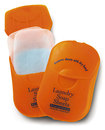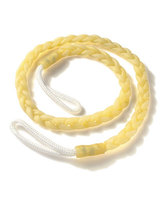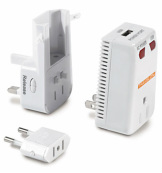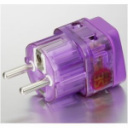Be safe
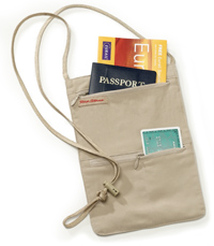
Every country has professional thieves who prey on tourists. They work so fast you won't know your pocket has been picked. One way to protect yourself is to have a silk neck wallet (above) to keep your money, etc., out of your pockets.
Use cash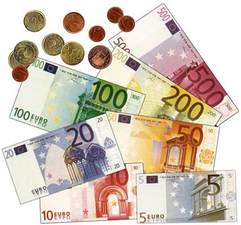
In Europe, stop using a credit card or debit card. Start using cash.
Why? Because you'll pay a fee of about 3% to 5% every time you use your card. Some cards claim to have no fees, but that's misleading. They get their money by giving you a lower exchange rate. Go to the ATM and get enough cash to last you for a week or two. Hide some in a room safe or a locked suitcase. You will pay about 1% to withdraw cash. That's much cheaper than using plastic. |
How to pack light
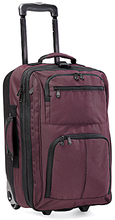
Do not plan for a month-long trip. Plan for a one-week trip and do laundry.
Bring six days' worth of clothes and another pair or two of shoes. Bring clothes that dry quickly such as polyester blends and do laundry in your sink or tub every couple of days. Rather than wear jeans (cotton takes too long to wash and dry), I wear dark slacks that won't show dirt as easily as do light colors. I wash stuff that touches my skin (polo shirts, socks, undies) after each use and wash stuff that doesn't only as needed. See more packing tips from USA Today. I also use compact gear. For example, rather than carry a big jacket, I use a windbreaker that rolls into a small sack that fits in my hand. I put all that in a single 21-inch (airline carry-on size) suitcase sold by Rick Steves, who by the way, offers offers excellent packing tips and a list of items to bring for men and women. Travel gear stores I trust: Rick Steves, Magellan's, Walkabout and Travel Smith.
|
Consider a travel vest
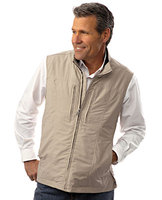
I use this travel vest by Scottevest (right) because it's handy and safe. I can carry an iPad, water bottle, sunglasses, point-and-shoot camera (with a lens cleaner on a string), iPod, coins, wallet, reading glasses, keys and valuables on the inside of this vest (no access from the exterior) without any risk of getting ripped off.
With 22 pockets, the vest can hold most anything. And the vest is designed to distribute weight so that full pockets won't hurt your shoulders. In fact, this vest is like having another carry-on bag. You can get them in men's and women's versions. Order your regular shirt size. The vest comes just a little bigger to let it hold stuff. |
Bring a guide book

I'm partial to Rick Steves. His books are also available for the Kindle and through the Apple iBooks store. I put them on my iPad mini to save space in the suitcase.
I also bring good maps. Good choices: the sturdy Rough Guide maps for Florence, the coated-paper National Geographic map for Rome and the laminated Streetwise map for Venice. Also, consider downloading map apps for your tablet or cellphone. I like the National Geographic World Atlas app for my iPad mini. |
Can I use my cellphone?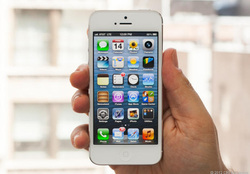
You can rack up a $1,000 bill in a month if you let your phone roam for calls and data and if you don't have an international plan. Whether you can get such a plan depends on your carrier and your phone.
A few Verizon phones will work on the European system. Most AT&T phones do, but you pay extra to cover roaming. T-Mobile now gives all of its customers 2G European access without roaming. You can pay for higher speeds. |
